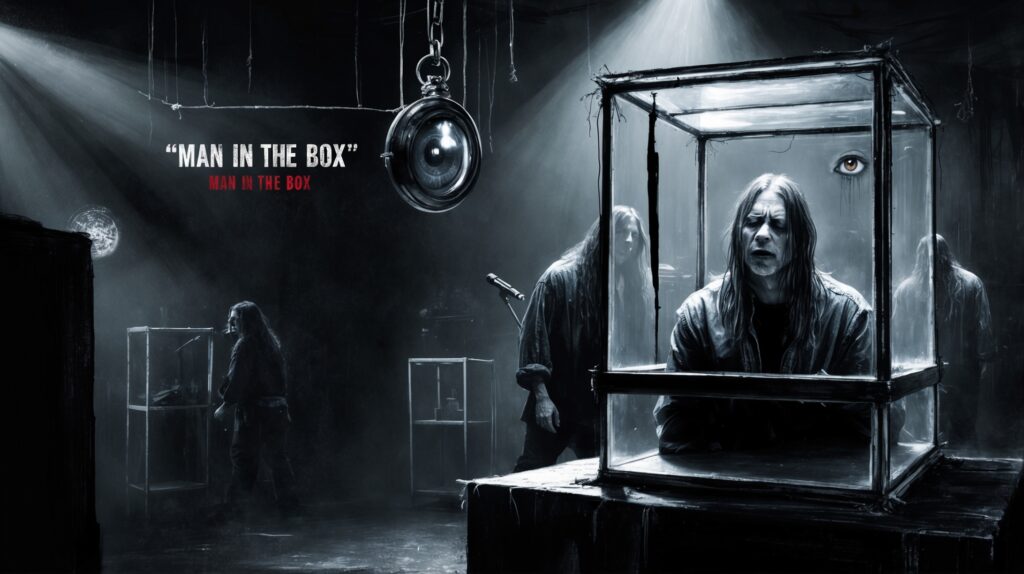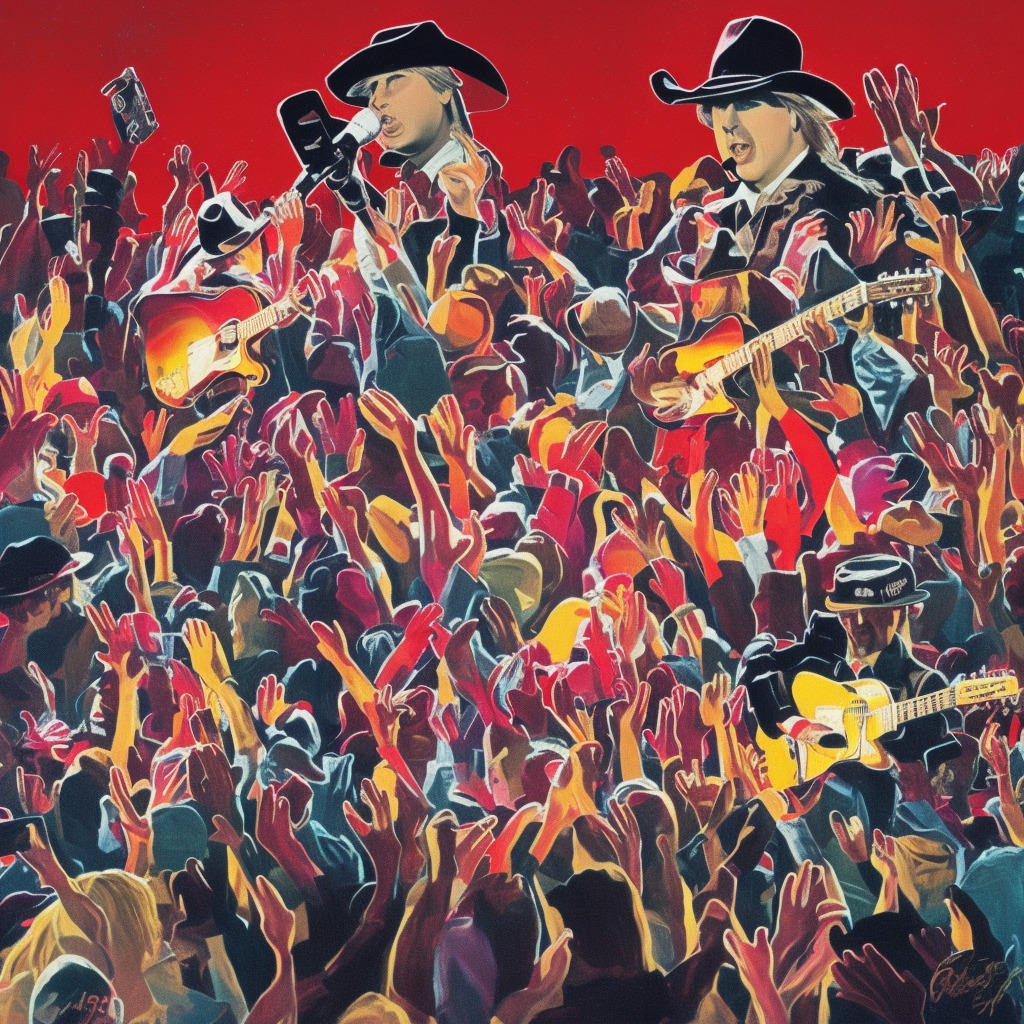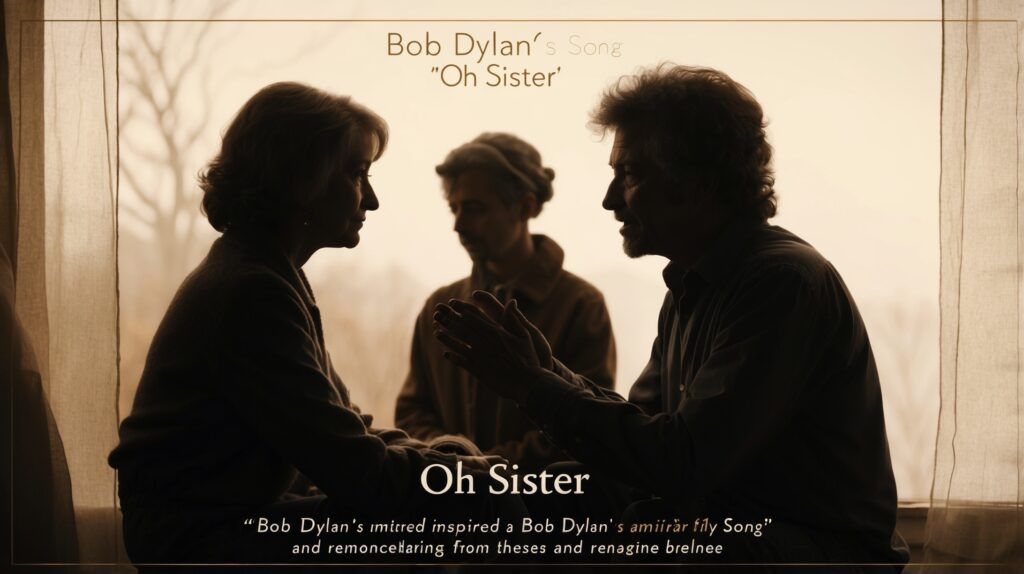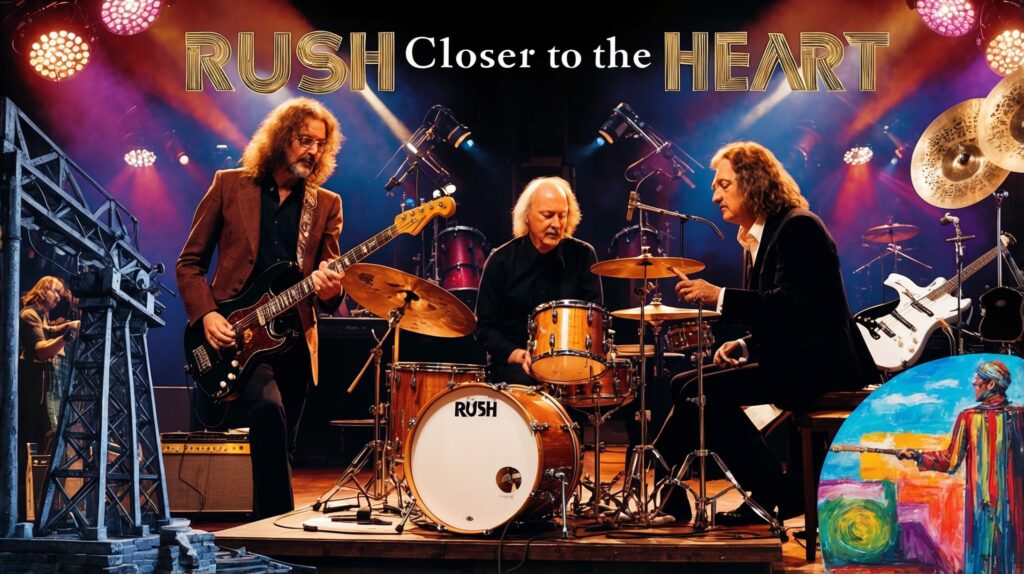Alice In Chains: The Architects of Grunge and Metal Fusion
Alice In Chains carved a niche with their grunge-metal fusion, with “Man In The Box” being a pivotal release that highlighted their unique sound driven by raw power and emotional depth.
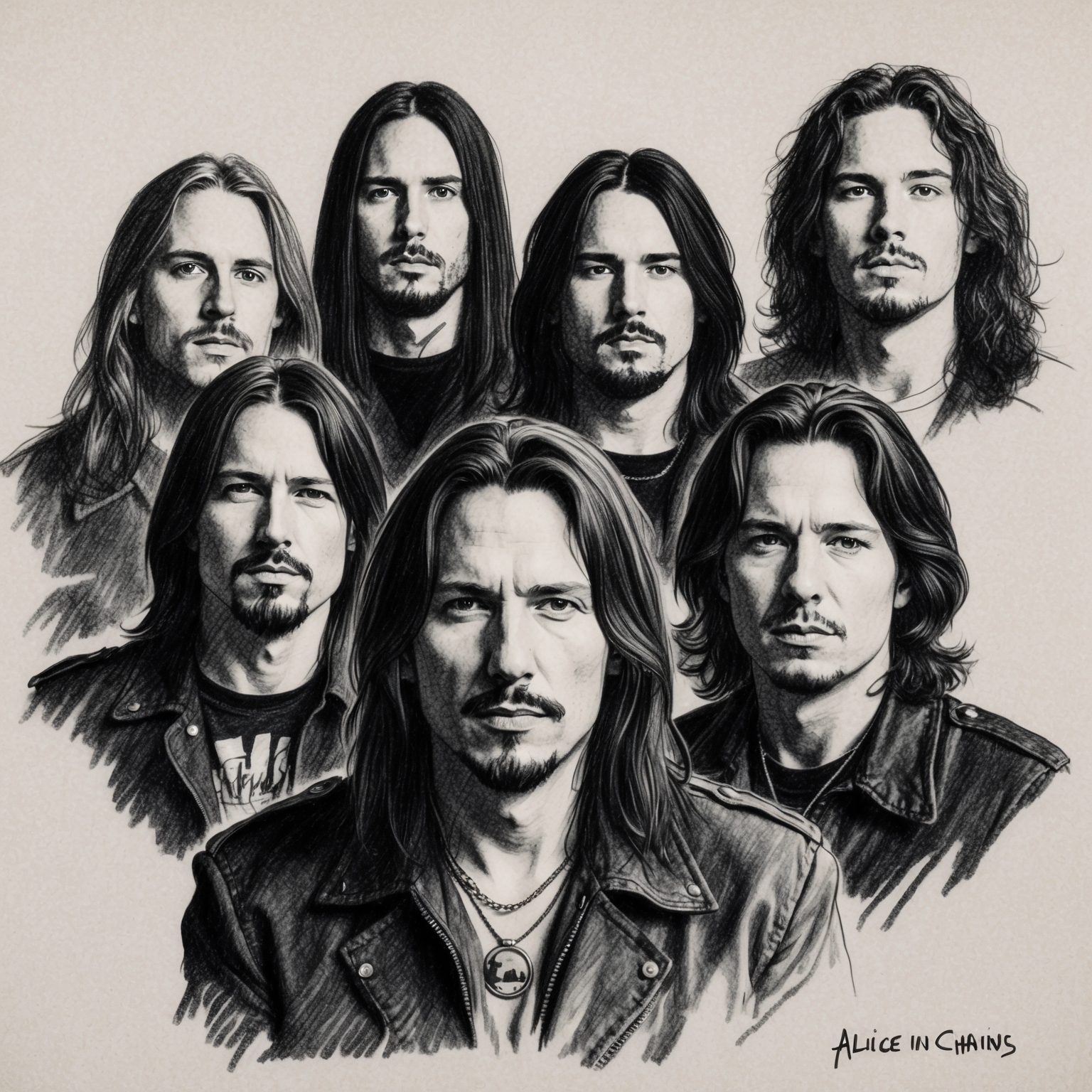
Alice In Chains emerged as one of the dominant forces of the early 1990s Seattle grunge scene, a movement that reshaped the landscape of rock music. While the band shares the spotlight with other legendary groups such as Nirvana and Pearl Jam, Alice In Chains distinguished themselves with a heavier, more riff-driven sound that threaded the line between gritty grunge aesthetics and the thunderous aggression of heavy metal. “Man In The Box,” released in 1990, was pivotal not just for the band, but for the entire genre — a bona fide anthem that quickly became a staple of rock radio.
Founded by guitarist and vocalist Jerry Cantrell alongside drummer Sean Kinney, the band solidified its iconic lineup with the addition of bassist Mike Starr and the haunting, charismatic presence of lead vocalist Layne Staley. Their early years were marked by a rigorous work ethic and an intense creative drive. Cantrell’s heavy, memorable riffs coupled with Staley’s distinct vocal style and dark lyrics set the band apart, fostering a unique and immediately recognizable sound.
During the era surrounding the release of “Man In The Box,” Alice In Chains was deeply entrenched in a music scene that was shifting dramatically. With artists exploring themes of alienation and despair, the band’s approach resonated with listeners on an emotional level. Their creative partnership thrived on contrasts, blending Cantrell’s melodic sensibilities with Staley’s raw, edgy tenor. The song itself quickly garnered attention for its stark, powerful execution and visceral lyrics, making waves both in the U.S. and internationally.
The Mastermind Behind ‘Man In The Box’ – Jerry Cantrell
Jerry Cantrell, the mastermind behind ‘Man In The Box,’ is renowned for his heavy riffs and dark lyrical themes. His collaborations with Layne Staley defined Alice In Chains’ signature sound.

Background and Career: Jerry Cantrell, the main composer for “Man In The Box,” is a pivotal figure in the rock and grunge music scenes. Born in Tacoma, Washington, Cantrell’s early interest in music was sparked by his exposure to classic rock icons like Elton John and Black Sabbath. His journey into music was further propelled by his discovery of bands such as Kiss and Van Halen, which inspired him to pick up the guitar. Before Alice In Chains became a household name, Cantrell was involved in several bands throughout Seattle’s burgeoning music scene, laying the groundwork for his distinctive style.
Musical Style and Influences: Cantrell’s musical style is characterized by heavy, riff-driven guitar lines and dark, introspective lyrical themes. Influenced by both metal and blues, his compositions often feature haunting melodies and complex harmonics. Cantrell’s ability to blend hard rock with nuanced storytelling has played a crucial role in defining Alice In Chains’ sound. His influences can be traced back to iconic acts like Black Sabbath, contributing to the moody undertones that permeate his music.
Collaborations and Partnerships: Jerry Cantrell’s collaboration with Layne Staley, Alice In Chains’ frontman, stands out as one of rock music’s most dynamic partnerships. The synergy between Cantrell’s compositional prowess and Staley’s haunting vocals created a unique sonic identity for the band. This partnership was particularly evident in “Man In The Box,” where Staley’s emotive delivery is complemented by Cantrell’s driving guitar work. Beyond Alice In Chains, Cantrell has also collaborated with musicians such as Ozzy Osbourne and Metallica, showcasing his versatility and wide-reaching influence in the rock genre.
Celebrating ‘Man In The Box’: Awards, Covers, and Screen Presence
Man In The Box’ by Alice In Chains has earned critical acclaim and notable Grammy nominations. It has inspired various covers by artists such as Apocalyptica and appeared in TV shows like ‘The Sopranos’ and video games like ‘Guitar Hero’.

Alice In Chains’ breakthrough hit, ‘Man In The Box’, stands as a potent testament to the grunge era’s raw power, both critically acclaimed and beloved by fans worldwide. Though the track may not have stacked numerous awards directly, its influence is undeniable. The song’s haunting power contributed to the band’s nomination for Grammy Awards in the ’90s, bringing Alice In Chains into the spotlight.
One of the most notable recognitions received by ‘Man In The Box’ came when the song was nominated for a Grammy Award for Best Hard Rock Performance with Vocal in 1992. Although it didn’t win, this nomination marked an important milestone for the band, indicating their growing impact within the music industry. Such acknowledgment not only elevated the song but also solidified Alice In Chains’ presence in the competitive sphere of rock music.
Beyond its award recognition, ‘Man In The Box’ has been embraced by a variety of artists eager to pay homage to its iconic sound. Notably, ‘Apocalyptica’, the Finnish symphonic metal band known for their masterful cello renditions of metal classics, covered the track, adding a rich, orchestral layer to its gritty intensity. Other artists in diverse genres have also taken a shot at reimagining this classic, each adding their own unique spin while retaining the song’s quintessential angst and vigor.
In popular culture, ‘Man In The Box’ has left its mark through appearances across different media platforms. The song featured prominently in the television show ‘The Sopranos’, underscoring its enduring appeal and relevance. Video games, such as the celebrated ‘Guitar Hero’ series, also included the track, introducing it to a new generation of listeners eager to revel in its thundering riffs and haunting vocals. As ‘Man In The Box’ continues to receive attention and reinterpretation, it maintains its status as an enduring anthem of grunge brilliance.
Chart Performance and Cultural Impact
Explore how “Man In The Box” by Alice In Chains navigated the charts, influencing grunge music’s mainstream acceptance while establishing Alice In Chains as a formidable force in rock history.

When Alice In Chains released “Man In The Box” in early 1991, it did not storm up the charts overnight, but its impact was unmistakable and undeniable. Initially starting at modest positions, the song gradually climbed, supported by the growing popularity of the grunge movement led by bands from Seattle. By charting on the Billboard Mainstream Rock Tracks – where it peaked at number 18 – it signaled a national breakthrough for the band and was a strong contender in reshaping the rock scene.
The song gained more ground than many tracks that were higher on the charts due to its powerful sound and depth. Amidst pop and rock hits at the time, “Man In The Box” was fiercely distinct with its heavy riffs and haunting lyrics. It stood out particularly against the backdrop of the pop-dominated late 80s and early 90s charts, offering a harder, more introspective alternative for listeners.
Though not their first single, “Man In The Box” was pivotal in establishing Alice In Chains’ influence and marked their first major entry into the mainstream consciousness. Its release coincided with the rising Seattle sound wave, marking a period where the band, although initially overshadowed by contemporaries like Nirvana and Pearl Jam, began to carve their distinct niche.
The marketing strategy for “Man In The Box” leaned heavily on its music video, which received heavy rotation on MTV and helped cement the band’s growing fanbase. Critical reception was mixed initially but evolved into praise as the uniqueness of their sound was recognized more widely. Its enduring popularity is evident in its frequent airplay and inclusion in curated playlists on platforms like Spotify and Apple Music, years after its release.
The song’s influence extended beyond its chart position, becoming a staple in the grunge genre and influencing later bands with its dark tone and layered sound. Fan communities praise it not only for its raw energy but also for its lyrical depth, often dissected and celebrated in forums and social media discussions.
Decoding the Compelling Visuals of ‘Man In The Box’
The music video for Alice In Chains’ ‘Man In The Box’ is an iconic representation of the band’s grunge aesthetic, contributing significantly to the song’s success through its haunting visuals and wide MTV exposure.

Alice In Chains’ ‘Man In The Box’ music video perfectly encapsulates the dark, foreboding nature of the song itself. Released in 1990 and directed by Paul Rachman, the video played a significant role in showcasing the band’s distinctive grunge aesthetic. Set against a backdrop of distressed urban environments and unsettling, surreal imagery, the video maintains a stark and gritty tone throughout, using low lighting and shadow to mirror the song’s haunting themes of confinement and existential dread. The lead vocalist, Layne Staley, is frequently depicted through a fisheye lens, which amplifies the song’s unsettling atmosphere and sets a rather introspective mood. The music video of ‘Man In The Box’ significantly contributed to the song’s success by humanizing the intense, grunge sound the band was known for. At a time when the grunge movement was gaining momentum, Alice In Chains used the music video as a tool to visually establish themselves as frontrunners of the genre. Frequently aired on MTV, it captured the attention of a wider audience who connected with its raw simplicity and sonic depth. The video’s bold and unpolished aesthetic resonated with grunge enthusiasts, further elevating the band’s popularity. Critical reception of the ‘Man In The Box’ music video was overwhelmingly positive, with viewers and critics alike praising its atmospheric qualities. Directed by Paul Rachman, known for his ability to create evocative visuals, the video has remained iconic in the annals of music history. While it doesn’t boast celebrity cameos, it includes subtle elements like a chained dog and a watchful eye, which align perfectly with the song’s introspective critique of societal constraints. As such, the video serves as both an artistic statement and a compelling visual accompaniment to the track’s lyrical content.
Unpacking the Musical Framework of ‘Man In The Box’
Explore the intricate song structure of ‘Man In The Box’ by Alice In Chains, examining its key, tempo, melody, harmony, and instrumentation. See how this track marks a pivotal moment in the band’s discography.

In the tapestry of rock music, Alice In Chains’ ‘Man In The Box’ stands out through its intricate song structure which contributes to both its originality and timeless appeal. The song is predominantly set in the key of E minor, which plays a crucial role in its dark, brooding tone that’s synonymous with the grunge movement.
The chord progression primarily revolves around power chords, offering a heavy and gritty sound that captures the raw emotions illustrated in the lyrics. The tempo oscillates around a moderate pace, about 80 beats per minute, allowing the song to maintain a steady yet impactful rhythm. This tempo choice effectively supports the intense vocal delivery of Layne Staley, pulling listeners further into the song’s introspective narrative.
A hallmark of ‘Man In The Box’ is its riff-driven melody. The repeated, down-tuned guitar riff, played by Jerry Cantrell, is instantly recognizable and lays a solid foundation for the verses. Complementing this is the layered harmony created through vocal overlays and the strategic use of effects pedals, which enhance the haunting and oppressive feel of the track. The rhythm section, anchored by the bass and drums, adds depth and a pulsating drive that reinforces the song’s somber theme.
The instrumentation is vital to the track’s unique soundscape. The use of the talk box by Cantrell adds a signature sound to the guitar, creating a distinctive vocalized effect that mirrors the song’s themes of entrapment and suppression. This innovative use of technology distinguished ‘Man In The Box’ in the band’s early catalog and marked a developmental point in their musical journey.
In broader terms of Alice In Chains’ discography, ‘Man In The Box’ exemplifies the band’s evolution from their roots into a pioneering role in the grunge scene. While earlier works had hinted at this direction, the song’s intricate structure and mature thematic elements showcased their growth as artists. Comparing this track to later works reveals a consistent thematic exploration of dark and emotional subjects, yet ‘Man In The Box’ remains iconic for its pioneering use of musical effects and its raw, unfiltered presentation.
Recorded at London Bridge Studio and produced by Dave Jerden, ‘Man In The Box’ carries some intriguing anecdotes from its recording sessions. Known for capturing the band’s potent energy, the studio provided a conducive environment for crafting this particular sonic experience. This track, nestled in the ‘Facelift’ album, portrays the band’s innovative embrace of technology and their ever-evolving artistic direction, securing its place as a defining moment in Alice In Chains’ legacy.
Unraveling the Box: A Deep Dive into the Lyrics
Delve into the powerful lyrics of ‘Man in the Box’ by Alice In Chains, a song rich with themes of entrapment and existential dread, woven through with raw narrative and literary brilliance.
Won’t you come and save me, save me?
Feed my eyes, can you sew them shut?
Jesus Christ, deny your maker
He who tries, will be wasted
…
******* This Lyrics is NOT for Commercial use *******
 Lyrical Themes and Messages: At the heart of Alice In Chains’ ‘Man in the Box’ lies a complex web of themes that resonate heavily with listeners. The song primarily deals with themes of entrapment, helplessness, and a desperate cry for salvation. Its lyrics evoke images of a person buried in their own struggles, seeking redemption and a way out of their darkness. While many interpret these themes as personal, touching on lead singer Layne Staley’s struggles with addiction, others view them as a broader commentary on society’s tendency to ignore or suppress deep-seated issues. The religious references, particularly the plea ‘Jesus Christ, deny your maker,’ add an additional layer of complexity, challenging conventional beliefs and calling into question the presence of a higher power amid suffering.
Lyrical Themes and Messages: At the heart of Alice In Chains’ ‘Man in the Box’ lies a complex web of themes that resonate heavily with listeners. The song primarily deals with themes of entrapment, helplessness, and a desperate cry for salvation. Its lyrics evoke images of a person buried in their own struggles, seeking redemption and a way out of their darkness. While many interpret these themes as personal, touching on lead singer Layne Staley’s struggles with addiction, others view them as a broader commentary on society’s tendency to ignore or suppress deep-seated issues. The religious references, particularly the plea ‘Jesus Christ, deny your maker,’ add an additional layer of complexity, challenging conventional beliefs and calling into question the presence of a higher power amid suffering.
Narrative and Storytelling: The narrative style of ‘Man in the Box’ is raw and confrontational. Written from a first-person perspective, it places the listener directly in the shoes of someone grappling with the inner turmoil of their existence. This perspective choice magnifies the song’s impact, creating an intimate and urgent appeal that resonates deeply. Throughout the song, there’s a palpable sense of isolation and confinement, a powerful reflection of inner despair that hits home for many who listen.
Use of Literary Devices: Alice In Chains’ lyrical prowess is highlighted through their use of literary devices. Metaphors abound, with the ‘man in the box’ symbolizing entrapment and the struggle against personal demons. The stark, visceral imagery, like ‘buried in my shit,’ is jarring yet effective, illustrating the intensity of the singer’s plight. Simultaneously, the vivid phrasing challenges listeners to confront uncomfortable truths, evoking strong emotional responses. This mastery of language simultaneously adds depth and a haunting beauty to the narrative, making the song a poignant auditory experience.
🎸 Did you know? Man In The Box by Alice In Chains was inspired by lead singer Layne’s love for the Talkbox! Talk about a ‘vocal’ performance! 😎 #AliceInChains #GrungeLegend #ManInTheBox #RockTrivia https://bit.ly/4fqCZAk
Click to Tweet

